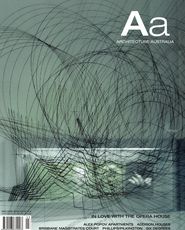IN DEFENCE OF SULMAN
In reference to “James Birrell in conversation with John Macarthur” (Architecture Australia, vol 94 no 2 March/April 2005), James Birrell’s statements about Sulman are unjustified. I have not seen any documented reference to prove that Sulman undermined Griffin even before he arrived in Sydney. As for Griffin saying “I can’t work with this man”, is Birrell sure that Griffin was not referring to P. T. Owen rather than Sulman? Percy Owen, Federal Director-General of Public Works, was Griffin’s harshest critic. Griffin was never considered to chair the Federal Capital Advisory Committee (FCAC). When Sulman was appointed chair of the FCAC (and not the “Federal Advisory Council” as Birrell stated) he invited Griffin to work with him but Griffin refused because Owen was a member and he could not possibly work with “this man”.
The Sulman statement that Birrell quoted was poorly worded and read more like a personal opinion than a policy statement. I refuse to believe that that statement alone could have done “the most damage to Canberra”. It does not do justice to Sulman’s town-planning expertise and gift for words. Griffin’s euphoria in winning the premier award was doused even before he arrived in Sydney by news that his Canberra design had been superseded by a hybrid plan proposed by a board made up of senior officers of the Public Works Committee. Sulman was not a member of this board but Owen was and so was W. L. Vernon. On 16 October 1913, Griffin was appointed Federal Capital Director of Design and Construction with the principal role of supervising all work to be done on Canberra. His authority disappeared when Parliament accepted the board’s plan, and not his, and approved work to commence on site at once.
In 1914 Sulman, in his capacity as President of the Town Planning Association and as the self-appointed spokesman for the architectural and engineering professions within the Commonwealth, gave evidence at the Parliamentary Standing Committee on Public Works. He strongly urged the powers that be to allow Griffin, as author of the premiated design, to work without any interference and urged “that no alteration be made in the present arrangement by which Mr Griffin is authorised to carry out his own plan, subject to such modifications as he has already made or thinks it desirable to suggest, approve of, or recommend …” (W. B. Griffin, Letter to Prime Minister Hughes, 8 January 1921, Melbourne. MLQ980.2.G, Mitchell Library.)
I find it unfortunate that Birrell can denigrate Sulman’s significant role in Canberra’s development with just a few short sentences. His statements’ accuracy needs to be further tested before he delivers his A. S. Hook Address. There is no doubt that everyone’s lasting impressions of Canberra are its trees and that charming one-storey cottage, Calthorpe House – a representative example of the diminutive detached one-storey cottage and garden that Sulman envisioned as the ideal Canberra home and for which, even now, he is tragically vilified.
ZENY EDWARDS
PHD CANDIDATE, UTS, “THE LIFE AND WORK OF SIR JOHN SULMAN 1849–1934”.
TRANSPORT PROJECTS?
Do you have a transport-related project that you’d like to see published? Whether it is a recently completed project or a design still in the making, I would like to hear about it for possible inclusion in the upcoming book New Transport Architecture.
I am a UK-based writer and I’m currently compiling a list of transport projects for the book, which will be published by Mitchell Beazley. I am looking for forty inspiring projects, from airports to bus shelters and anything in between – boathouses, cycle parks, rail stations, ferry ports, hangars, car parks, etc. If you think that you have designed something that I will be interested in seeing, please contact me at willjonz@hotmail.com.
When completed, New Transport Architecturewill be a 300-page hardback publication. As well as forty innovative projects, it will feature essays by experts on architecture and transport. The book will be distributed worldwide.
WILL JONES
CH2
In your article on the Queenscliff Centre (Architecture Australia, vol 94 no 1, Jan/Feb 2005) Lyons are reported as questioning the approach by the City of Melbourne.
The facts are that the City of Melbourne’s new CH2 building does cost 20% more than a conventional commercial building and this figure has been published widely. Where the reported 50% came from is a mystery. Lyons question whether the MCC design will have a favourable impact on general practice, a surprising statement since the payback period on the environmental future is less than ten years.
The CH2 building achieves 80% energy savings. Equally significant are the savings on staff absenteeism and productivity due to the fresh air achieved by CH2’s airconditioning system. A modest assumption of 4.6% improvement in productivity will save $1.2 million per annum in staff costs. Current research shows that the use of green technology and good indoor air quality can achieve up to 15% productivity improvement.
At a time when scientists are saying that to stabilize the impact of current greenhouse gases at existing levels we would need to reduce our energy consumption by 60% today, we should all welcome any advances that push to improve the environment and the health and wellbeing of occupants of our commercial buildings.
For the record, it would require 28 CH2s to be built every year to offset the impact if the State Government of Victoria decides to extend the life of the Hazelwood power plant. This is the big picture.
PROF. ROB ADAMS
DIRECTOR, DESIGN & CULTURE, CITY OF MELBOURNE















